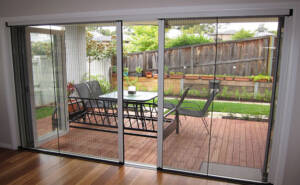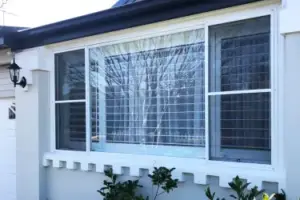Fly screens are an essential addition to any home. They help keep pesky insects out while allowing fresh air to flow in. If you have sliding doors, you might be wondering how to choose the best fly screens and how to install them properly. This article will guide you through everything you need to know about fly screens for sliding doors, from the benefits to the best options available, and provide you with installation tips.
Table of Contents
- Introduction
- Why Fly Screens Are Important
- Types of Fly Screens for Sliding Doors
- Retractable Fly Screens
- Magnetic Fly Screens
- Sliding Fly Screens
- Fixed Fly Screens
- Benefits of Fly Screens for Sliding Doors
- Choosing the Right Fly Screen
- Installation Tips
- Maintenance and Care
- Common Problems and Solutions
- Conclusion
Introduction
Sliding doors are a popular feature in many homes. They provide easy access to the outdoors, let in lots of natural light, and offer a beautiful view. However, they can also be an entry point for bugs. This is where fly screens come in handy. Fly screens for sliding doors are designed to keep insects out while allowing you to enjoy the benefits of having your doors open.
Why Fly Screens Are Important
Fly screens are essential for several reasons. First and foremost, they keep insects out. Flies, mosquitoes, and other bugs can be annoying and carry diseases. Fly screens help create a barrier that prevents these pests from entering your home. Additionally, fly screens allow fresh air to circulate, improving indoor air quality and reducing the need for air conditioning.
Types of Fly Screens for Sliding Doors
There are various types of fly screens available for sliding doors. Each type has its own advantages and is suitable for different needs. Here, we will discuss four main types of fly screens for sliding doors: retractable, magnetic, sliding, and fixed fly screens.
Retractable Fly Screens
Retractable fly screens are a popular choice for sliding doors. These screens can be rolled up or down as needed, making them very convenient. When not in use, they can be retracted into a housing, keeping them out of sight and protected from damage.
Key Features:
- Convenience: Easily retractable when not in use.
- Space-Saving: Does not take up space when retracted.
- Protection: Stays protected from weather and wear when not in use.

Magnetic Fly Screens
Magnetic fly screens are easy to install and remove. They use magnets to attach to the door frame, allowing for quick setup and removal. This type of screen is ideal for temporary or seasonal use.
Key Features:
- Easy Installation: Can be installed without any tools.
- Removable: Easy to take down and store when not needed.
- Affordability: Generally more affordable than other types.

Sliding Fly Screens
Sliding fly screens are designed to move along with your sliding door. They are installed on a separate track and can be easily opened and closed. This type of screen is ideal for those who want a permanent solution that integrates seamlessly with their sliding door.
Key Features:
- Integration: Moves along with the sliding door.
- Durability: Built to last with regular use.
- Convenience: Easy to open and close with the door.

Fixed Fly Screens
Fixed fly screens are a permanent solution that is installed directly onto the door frame. They do not move and are always in place. This type of screen is best for doors that are not used frequently.
Key Features:
- Permanent: Always in place, providing constant protection.
- Durability: Very sturdy and long-lasting.
- Low Maintenance: Requires little upkeep once installed.

Benefits of Fly Screens for Sliding Doors
Installing fly screens on your sliding doors offers numerous benefits. Here are some of the key advantages:
Insect Protection
The primary benefit of fly screens is that they keep insects out. This is especially important during the warmer months when bugs are more active. Fly screens create a barrier that prevents flies, mosquitoes, and other pests from entering your home.
Improved Airflow
Fly screens allow fresh air to circulate throughout your home. This improves indoor air quality and helps keep your home cool. Good airflow is essential for a healthy living environment.
Natural Light
Fly screens do not block natural light. You can enjoy the sunlight and the view from your sliding doors while keeping insects at bay. Natural light has many benefits, including boosting your mood and reducing the need for artificial lighting.
Energy Efficiency
By allowing fresh air to flow through your home, fly screens can reduce your reliance on air conditioning. This can help lower your energy bills and reduce your carbon footprint.
Added Privacy
Some fly screens are designed to provide additional privacy. They can obscure the view from outside while still allowing you to see out. This added privacy can make your home feel more secure.
Choosing the Right Fly Screen
When selecting a fly screen for your sliding doors, there are several factors to consider. Here are some tips to help you choose the right fly screen:
Measure Your Door
The first step is to measure your sliding door accurately. This will ensure that you choose a fly screen that fits perfectly. Measure the width and height of the door frame and take note of any obstructions that might affect installation.
Consider Your Needs
Think about what you need from a fly screen. Do you want something that is easy to install and remove, or are you looking for a permanent solution? Consider factors such as ease of use, durability, and maintenance requirements.
Look at Materials
Fly screens are made from various materials, including fiberglass, aluminum, and polyester. Each material has its own advantages. Fiberglass is durable and affordable, aluminum is strong and long-lasting, and polyester is flexible and resistant to damage.
Check Reviews
Before making a purchase, read reviews from other customers. This can give you an idea of the quality and performance of the fly screen you are considering. Look for screens that have positive reviews and high ratings.
Installation Tips
Installing fly screens for sliding doors can be a straightforward process if you follow these tips:
Gather Your Tools
Before you start, gather all the tools you will need. This may include a measuring tape, screwdriver, drill, and any installation hardware that comes with the fly screen.
Follow the Instructions
Carefully read the installation instructions provided by the manufacturer. Following these instructions will help ensure that the screen is installed correctly and securely.
Take Your Time
Do not rush the installation process. Take your time to measure accurately and install the screen properly. This will help prevent any issues and ensure that the screen functions as intended.
Test the Screen
Once the screen is installed, test it to make sure it opens and closes smoothly. Check for any gaps or areas where insects might be able to get through. Make any necessary adjustments to ensure a tight fit.
Maintenance and Care
Proper maintenance and care can extend the life of your fly screens and keep them looking and functioning like new. Here are some tips for maintaining your fly screens:
Regular Cleaning
Clean your fly screens regularly to remove dirt, dust, and debris. Use a soft brush or vacuum to gently clean the screen. For more thorough cleaning, you can remove the screen and wash it with mild soap and water.
Check for Damage
Periodically inspect your fly screens for any signs of damage, such as tears or holes. Promptly repair any damage to prevent insects from getting through.
Lubricate Moving Parts
If your fly screens have moving parts, such as rollers or hinges, lubricate them periodically to ensure smooth operation. Use a silicone-based lubricant to avoid attracting dust and dirt.
Store Properly
If you have removable fly screens that you use seasonally, store them properly when not in use. Clean them thoroughly and store them in a dry, protected area to prevent damage.
Common Problems and Solutions
Even with proper care, you might encounter some common problems with your fly screens. Here are a few issues and their solutions:
Screen is Hard to Open or Close
If your fly screen is difficult to open or close, check for obstructions in the track. Clean the track and remove any debris that might be causing the problem. Lubricate the track and rollers to ensure smooth operation.
Tears or Holes in the Screen
Small tears or holes in the screen can be repaired with a screen repair kit. For larger damage, you might need to replace the entire screen. Be sure to choose a replacement screen that is compatible with your existing frame.
Gaps Around the Screen
If there are gaps around the screen, insects can get through. Check the installation to ensure that the screen fits tightly. Adjust the screen or add weatherstripping to seal any gaps.
Screen is Sagging
A sagging screen can be tightened by adjusting the tension on the frame. If the frame itself is damaged or bent, you might need to replace it to restore the screen’s proper fit.
Conclusion
Fly screens for sliding doors are a valuable addition to any home. They provide essential insect protection while allowing fresh air and natural light to flow through your living space. By understanding the different types of fly screens, their benefits, and how to choose and install them, you can make an informed decision that meets your needs. Proper maintenance and care will ensure that your fly screens remain effective and in good condition for years to come.
In 2024, the options for fly screens are more diverse and advanced than ever before. Whether you choose retractable, magnetic, sliding, or fixed fly screens, you can enjoy a bug-free, comfortable home with the right solution for your sliding doors.
